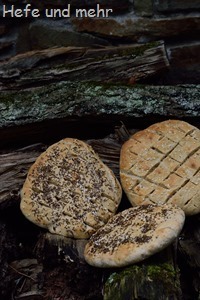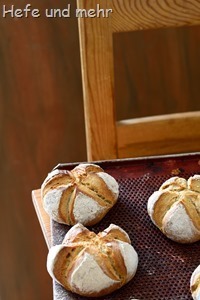![Lussekatter (2)[3] Lussekatter (2)[3]](https://www.hefe-und-mehr.de/wp-content/uploads/2019/12/Lussekatter-23.jpg) It’s been a long time, since I published my first Lussekatter recipe. Back then I learned that in Sweden you can find two different types of recipes: one with quark, and one without. The variant with quark was on my to do list ever since. And I had a recipe draft ready already three years ago. But an ugly flu stopped me baking back than and two Saint Lucia Days passed without me baking Lussekatter. But this year, finally, I managed it!
It’s been a long time, since I published my first Lussekatter recipe. Back then I learned that in Sweden you can find two different types of recipes: one with quark, and one without. The variant with quark was on my to do list ever since. And I had a recipe draft ready already three years ago. But an ugly flu stopped me baking back than and two Saint Lucia Days passed without me baking Lussekatter. But this year, finally, I managed it!
The Lussekatter with Quark are delicious. A hint of cardamom rounds the flavour but stays in the background while saffron is the main flavour component. Like my favourite Zopf-Recipe I replace part of the butter with cream, so the dough or the formed rolls can rise in the fridge, too.

![Malziges Saaten-Mischbrot (1)[3] Malziges Saaten-Mischbrot (1)[3]](https://www.hefe-und-mehr.de/wp-content/uploads/2019/12/Malziges-Saaten-Mischbrot-13_thumb.jpg)
![Pameln (1)[7] Pameln (1)[7]](https://www.hefe-und-mehr.de/wp-content/uploads/2019/11/Pameln-17_thumb.jpg)
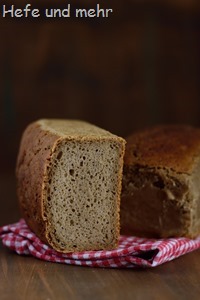
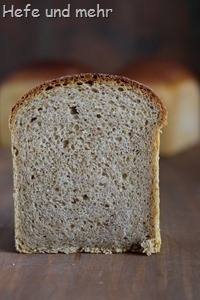 I got a bit to optimistic when I tried the first version of this bread. Adding a big portion of very ripe pâte fermentée was not the best of my ideas, as this brings to much enzymes in the dough and has the same effect like adding sourdough. After 24 hours proofing time the dough was still stable, but the resulting bread lacked volume. A sure sign that the gluten network already started to decline.
I got a bit to optimistic when I tried the first version of this bread. Adding a big portion of very ripe pâte fermentée was not the best of my ideas, as this brings to much enzymes in the dough and has the same effect like adding sourdough. After 24 hours proofing time the dough was still stable, but the resulting bread lacked volume. A sure sign that the gluten network already started to decline.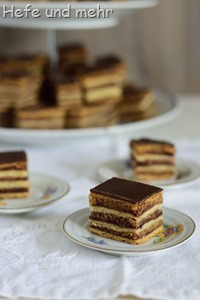 Sometimes questions of readers are timed just perfectly. So when Jasmin asked for a way to reduce yeast amount in my heirloom recipe of Greta-Garbo-Schnitten I told her I would try it right away, as I was planning to bake them for my upcoming birthday anyway. Baking Greta-Garbo-Schnitten has two advantages: They are a delicious favourite of mine and they taste best when baked a week in advance. And the second point goes well together with the fact that my birthday was at the end of a very busy week.
Sometimes questions of readers are timed just perfectly. So when Jasmin asked for a way to reduce yeast amount in my heirloom recipe of Greta-Garbo-Schnitten I told her I would try it right away, as I was planning to bake them for my upcoming birthday anyway. Baking Greta-Garbo-Schnitten has two advantages: They are a delicious favourite of mine and they taste best when baked a week in advance. And the second point goes well together with the fact that my birthday was at the end of a very busy week.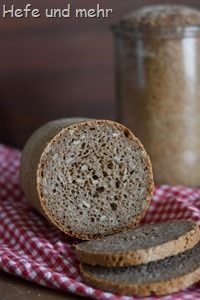
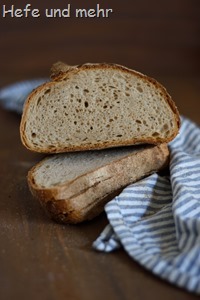 Already with the first recipe for my new “work day breads” there was the wish for recipes with some sourdough. Using a sourdough with a long, cold fermentation can cause problems with both the increasing acidity and the increasing enzyme activity. This can result in a weaker gluten network and a bread with less volume but with very chewy crumb.
Already with the first recipe for my new “work day breads” there was the wish for recipes with some sourdough. Using a sourdough with a long, cold fermentation can cause problems with both the increasing acidity and the increasing enzyme activity. This can result in a weaker gluten network and a bread with less volume but with very chewy crumb.